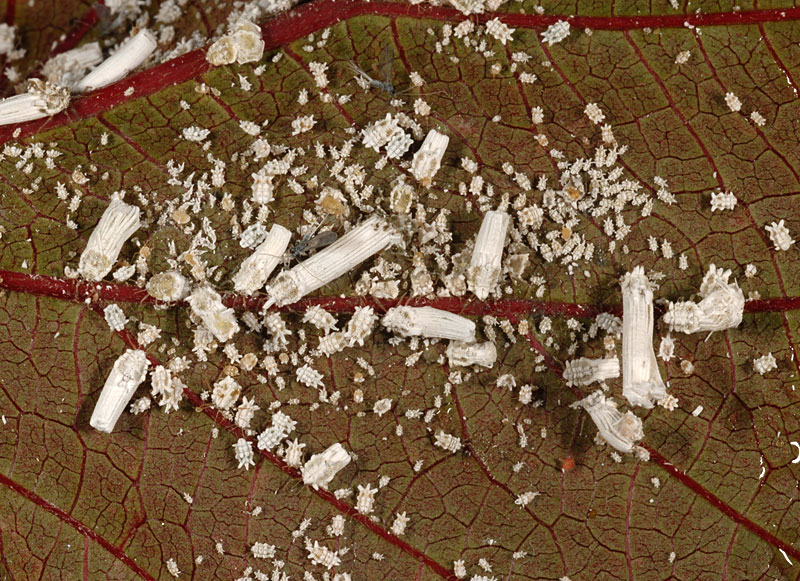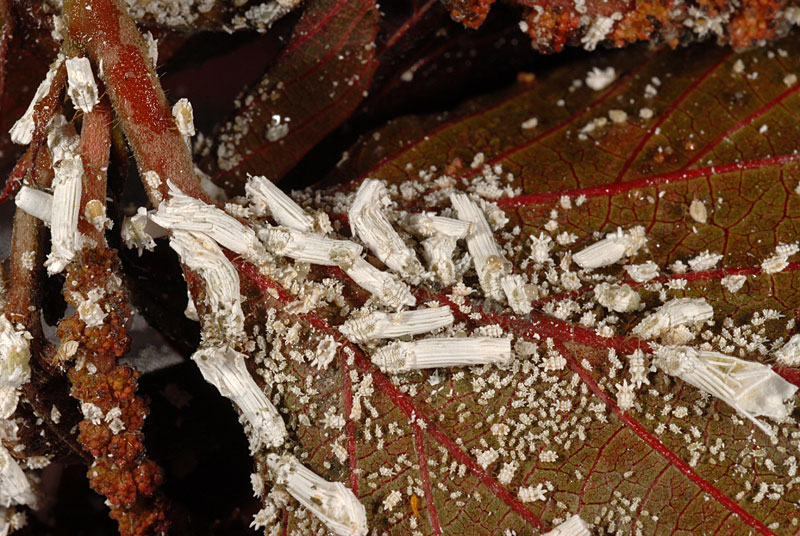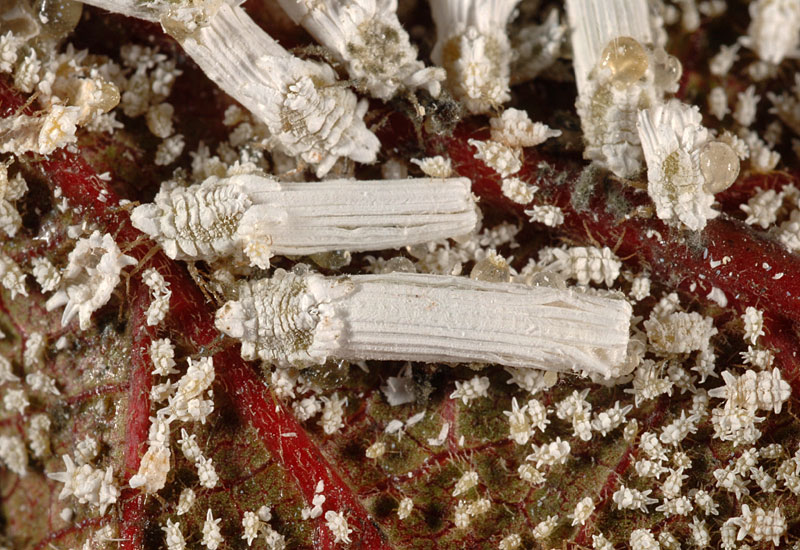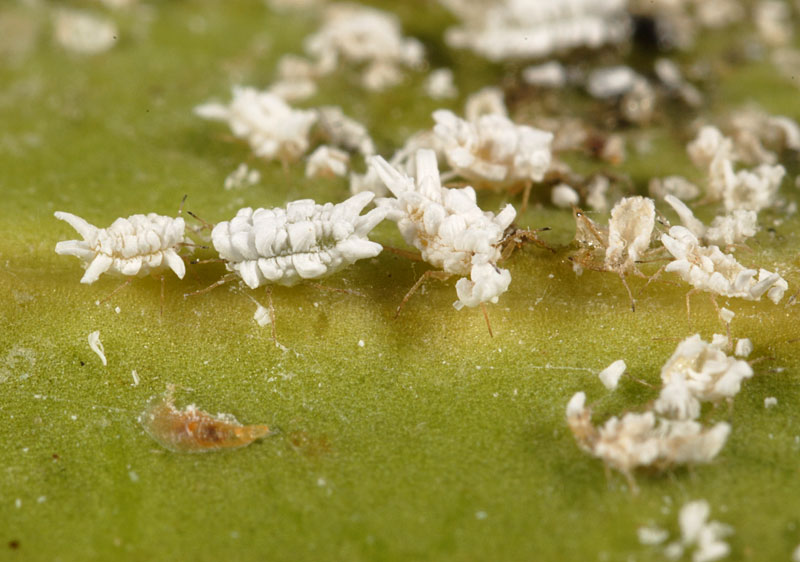Citrus Orthezia
|
adult females and nymphs; Photo by Lyle Buss, University of Florida |
|
adult females and nymphs; Photo by Lyle Buss, University of Florida |
|
adult females with ovisacs; Photo by Lyle Buss, University of Florida |
|
nymphs; Photo by Lyle Buss, University of Florida |
Scientific name
Praelongorthezia praelonga Douglas
Family
Ortheziidae
Synonyms
Orthezia praelonga Douglas
Description
The adult female with its covering is usually around 2 mm in length, but the thick, white, fluted ovisac attached to the abdomen may reach up to 6 mm in length. The body is covered in white waxy plates that are quite ornate. Adult females and immatures have well-developed, prominent, dark legs and antennae. The life cycle of citrus orthezia is not well described, but, like most scales, the females have 4 instars and the males most likely have 5. Males are winged, microscopic, do not feed, and are short-lived.
Distribution
Central and South America as well as the Caribbean.
Hosts
Palms: only known palm host is coconut palm (Cocos nucifera)
Other: may be found on a number of other hosts, but it is primarily known as a pest on citrus
May be confused with
The ornamentation of the waxy structures may be confused with whitefly larvae, but whitefly larvae lack legs. Also has a simliar ovisac to cottony cushion scale, but wax on insect body is found in ornate plates in citrus orthezia, not in cottony cushion scale.
Additional comments
Citrus orthezia also secrete honeydewhoneydew:
the sticky, sweet secretion produced by sap-feeding bugs
, and so are often accompanied by the growth of sooty mold.






